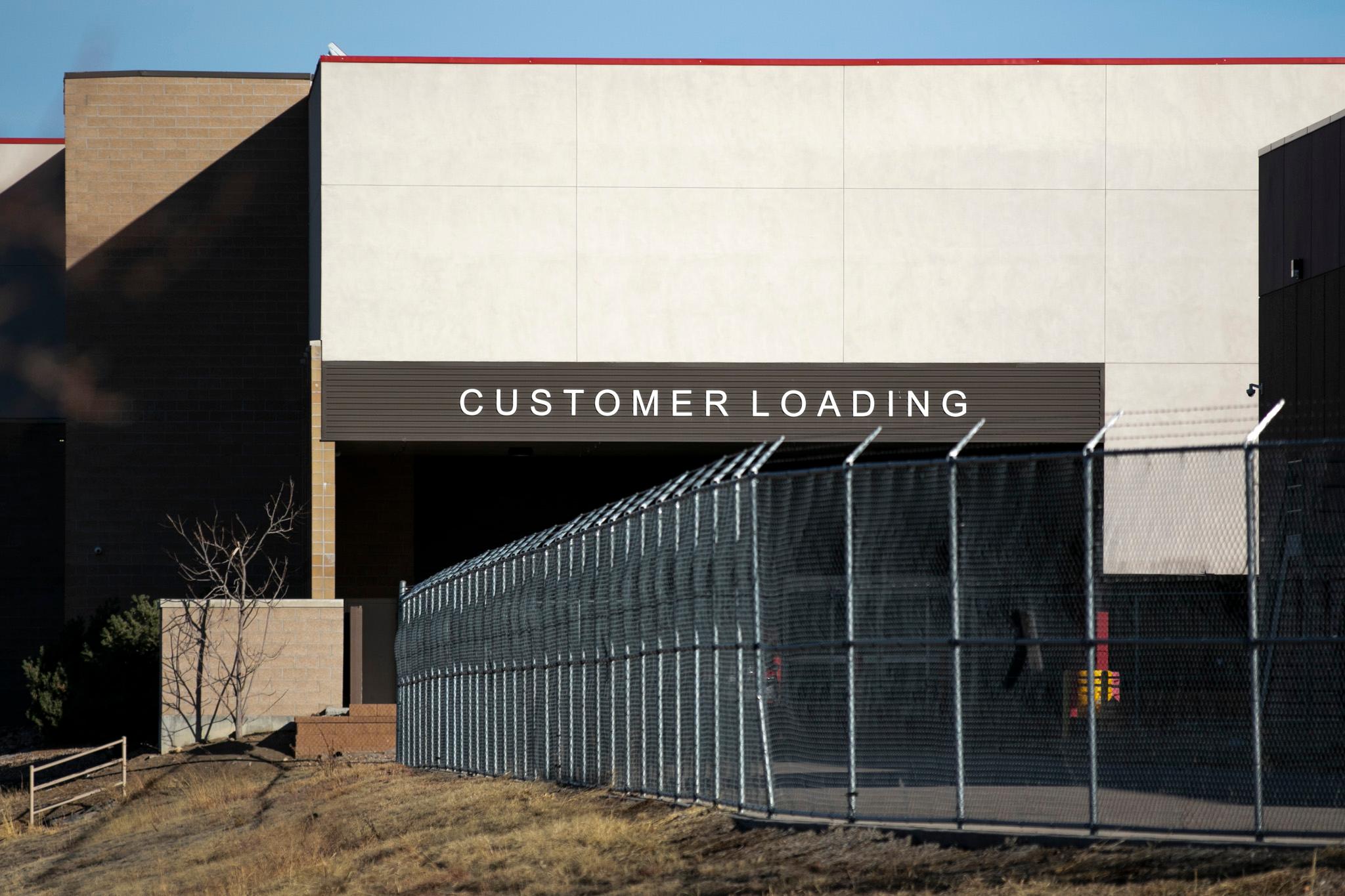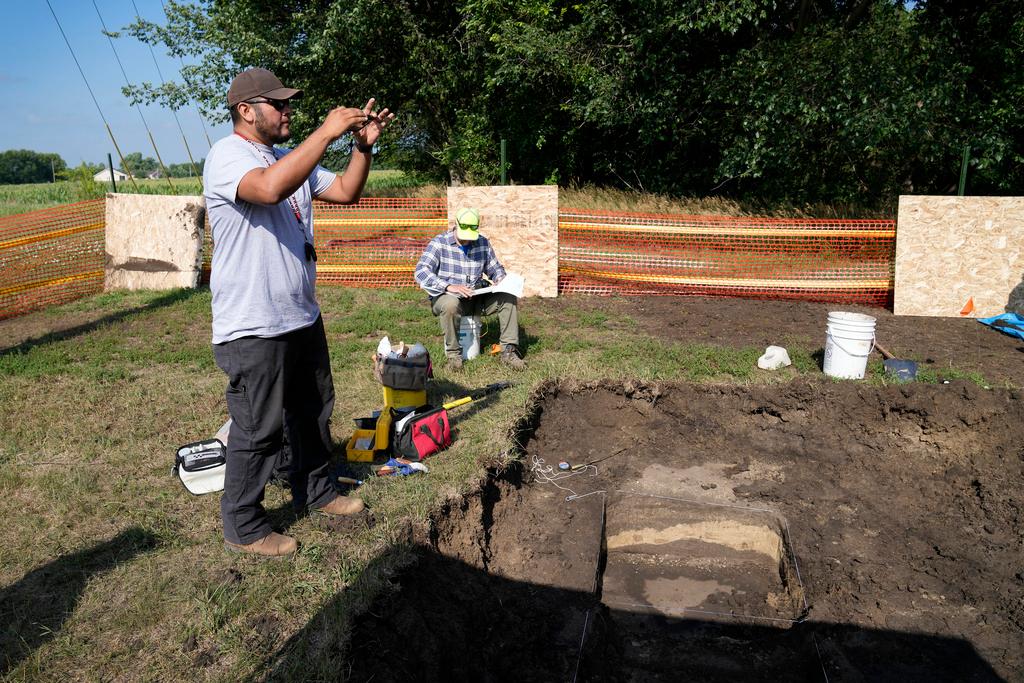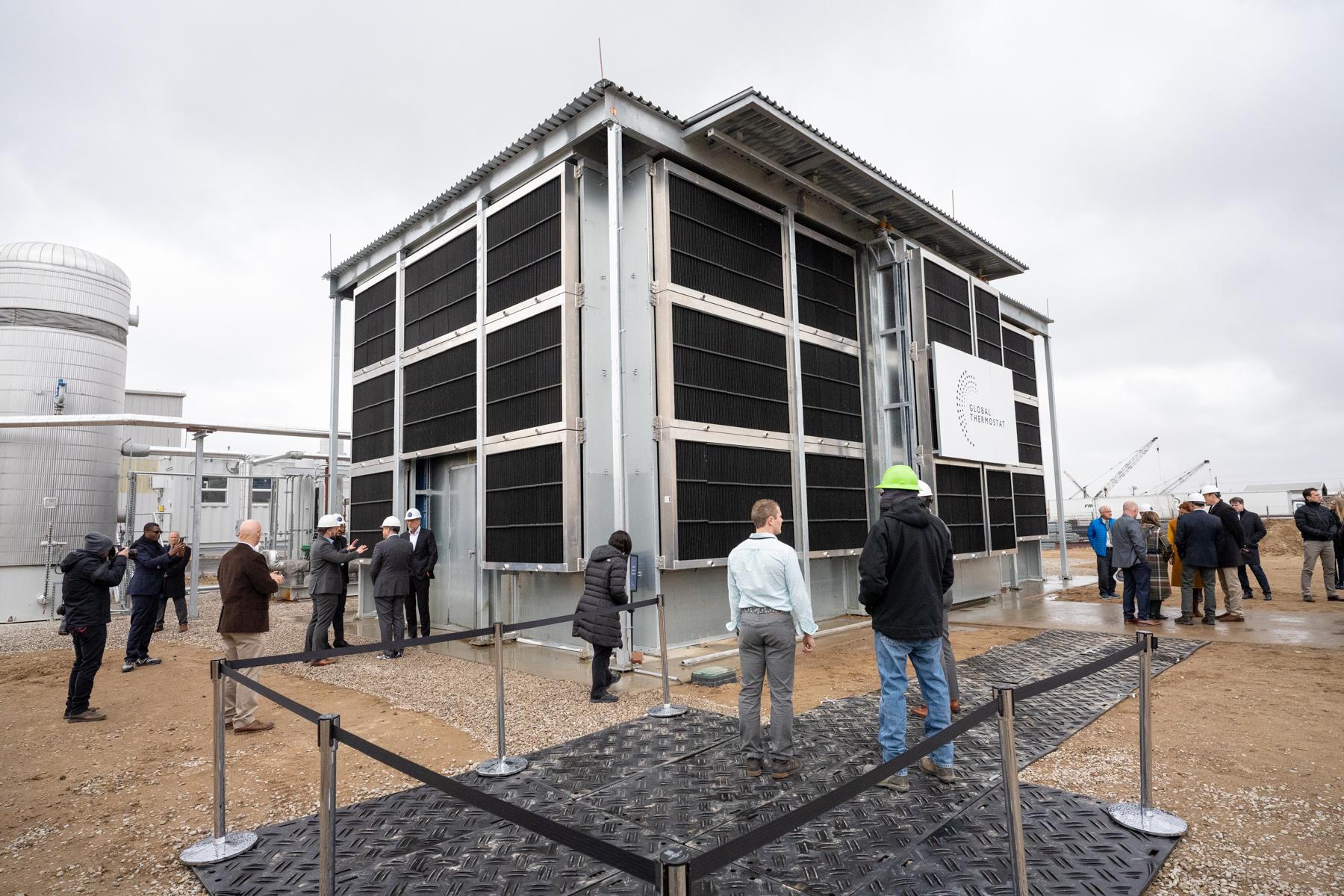
United Nations climate scientists issued another dire warning last month: Without a rapid movement to abandon fossil fuels, humanity will surpass critical warming thresholds within the next decade and doom future generations to a far less habitable planet.
It further suggested rapid efforts to reduce emissions might not go far enough. Due to the extent of greenhouse gasses already in the atmosphere, it called on policymakers to develop systems to draw carbon dioxide directly out of the air.
A Colorado company now says it's ready to meet the challenge.
This week, Global Thermostat unveiled a new demonstration system at its headquarters in Brighton, Colo., which it says is the largest operating direct air capture plant in the U.S. and the second largest in the world.
Gov. Jared Polis and former U.S. House Speaker Nancy Pelosi joined to cut a ribbon in front of the machine, which looks like a cube-shaped home without any windows. Fans in the walls draw air over honeycombed bricks coated in a proprietary solvent, which removes CO2 that can be used in industrial processes or stored underground.
"When the story of humanity's victory over the climate crisis is written, today will be a defining moment," Pelosi said. "What a thrill it is to be here to witness this great transformation."
But not everyone is ready to pop the champagne cork and toast climate salvation. Even if technical kinks are smoothed out, environmental advocates worry direct air capture could distract from more pressing efforts to reduce emissions. With that in mind, here are five challenges facing the young industry trying to save the world and gain an economic foothold in Colorado.
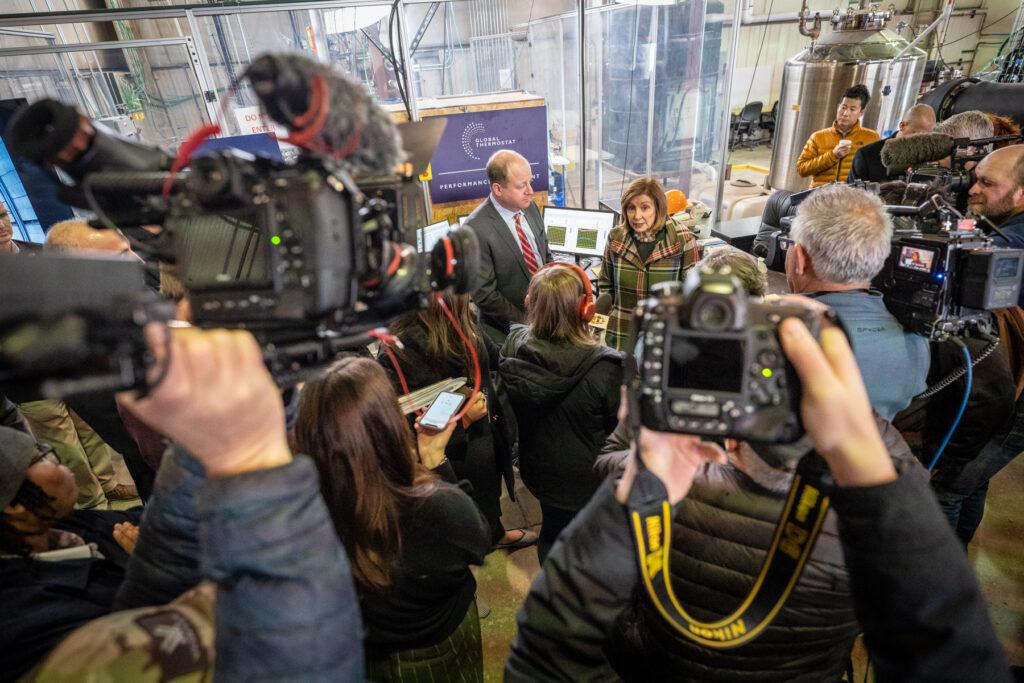
Direct air capture is really expensive
The latest report from the U.N. Intergovernmental Panel on Climate Change makes it clear that air capture companies can't go small. In order to limit climate change to 2 degrees Celsius, humanity would need to draw 5.8 billion tons of carbon dioxide from the atmosphere by mid-century. Another United Nations assessment calls for 10 billion tons of removal by 2050 to meet safer targets.
For scale, Global Thermostat says its new demonstration system can only remove 1,000 tons each year. At that rate, it would miss the deadline for carbon removal by more than 500 million years.
The company, of course, hopes to scale up its operations. It’s already working with funding from the U.S. Department of Energy to build a plant with 1,000 times the capacity of its current demonstration project.
To fund further efforts, Nahi, the CEO of Global Thermostat, said his company must find ways to cut the cost of carbon removal to about $100 per ton. Many analysts have noted the price is a "magic number" where the service becomes a viable tool for companies looking to offset their emissions or use CO2 in industrial processes.
Other projects charge between $600 and $1,000 to remove a ton of carbon. Nahi didn't clarify his company's price but said he's confident the company can reach the $100-per-ton goal.
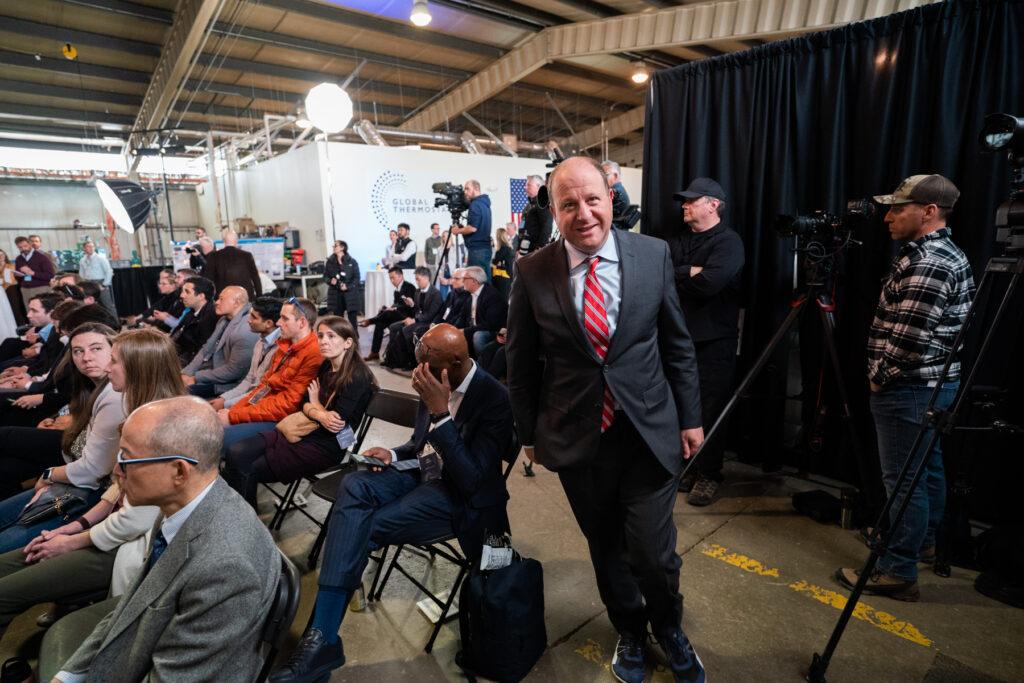
The systems are energy hogs
Research from the Massachusetts Institute of Technology found the systems require a massive amount of power. To remove one ton of CO2, it found current operations require about as much electricity as an average U.S. home uses in about a month and a half.
Oakley Shelton-Thomas, a senior researcher with Food and Water Watch, said that's why direct air capture could end up hurting, not helping, efforts to slow climate change. And even if they relied on renewable energy, competition with other power users could boost energy costs.
"That's the biggest problem with this technology," Shelton-Thomas said. "In a place like Colorado, where more than half of the electricity comes from fossil sources, that's going to result in more emissions than are pulled from the atmosphere."
Nahi said the demonstration plant was carbon-negative, but other executives wouldn't detail its energy usage. In response to a follow-up question, a spokesman for Global Thermostat said the company is "satisfied" with its efficiency but offered no further information.
Carbon dioxide isn't easy to move around
If direct air capture systems succeed, the end result is concentrated carbon dioxide that must be transported by trucks or through pipelines. That process comes with the risk of leaks, which can have terrifying consequences.
In 2020, a pipeline used to carry liquid CO2 to assist oil extraction burst near Satartia, Mississippi. An investigation by the Huffington Post revealed it created a colorless cloud of gas that settled into a valley. Residents caught inside suddenly collapsed as they gasped for air. Cars stalled without any oxygen to burn.
While no one died in the accident, it has led to new calls to regulate CO2 pipelines as the federal government pushes for more carbon capture projects around the country. The U.S. Bipartisan Infrastructure Law, which President Biden signed last year, devoted $3.5 billion to developing four direct air capture hubs across the country.

Captured carbon often helps extract more oil and gas
During the ribbon-cutting ceremony, Global Thermostat leaders speculated on a range of future uses for its CO2 including carbon-negative building materials and synthetic transportation.
What wasn't mentioned was the largest industrial use of CO2: advanced oil recovery. The process injects gas underground to coax more fossil fuels out of otherwise spent deposits.
While a large portion of the CO2 stays trapped underground, fossil fuel production is the main factor driving the climate crisis. Shelton-Thomas with Food and Water Watch said it's another reason the projects might end up accelerating climate change.
As for Global Thermostat, Nahi said none of the carbon from the new demonstration plant is now assisting with advanced oil recovery.
It won't work without rapid efforts to cut emissions
While carbon removal could be an important tool to guard against the worst consequences of climate change, multiple studies suggest it's useless without efforts to reduce emissions.
David Ho, a climate scientist at the University of Hawaii Manoa, laid out the logic in a recent opinion piece for Nature. He suggests thinking about carbon capture plants as time machines, each one capable of taking the atmosphere back to a moment with a lower buildup of greenhouse gas emissions.
By his math, a major carbon capture hub would erase a meaningless amount of time if humanity maintains current levels of greenhouse gas pollution. They only become effective at turning back the clock with a substantial decrease in annual emissions.
Stacy Tellinghuisen shares similar concerns from a political perspective. As the deputy director of policy for Western Resource Advocates, she said Colorado could get far more bang for its buck through efforts to reduce current emissions. Direct air capture should be seen as a final, but important, piece of the overall puzzle, she said.
"Investing in this technology development now will help us make sure it's up and running if and when we do need it," Tellinghuisen said.
Funding for public media is at stake. Stand up and support what you value today.



